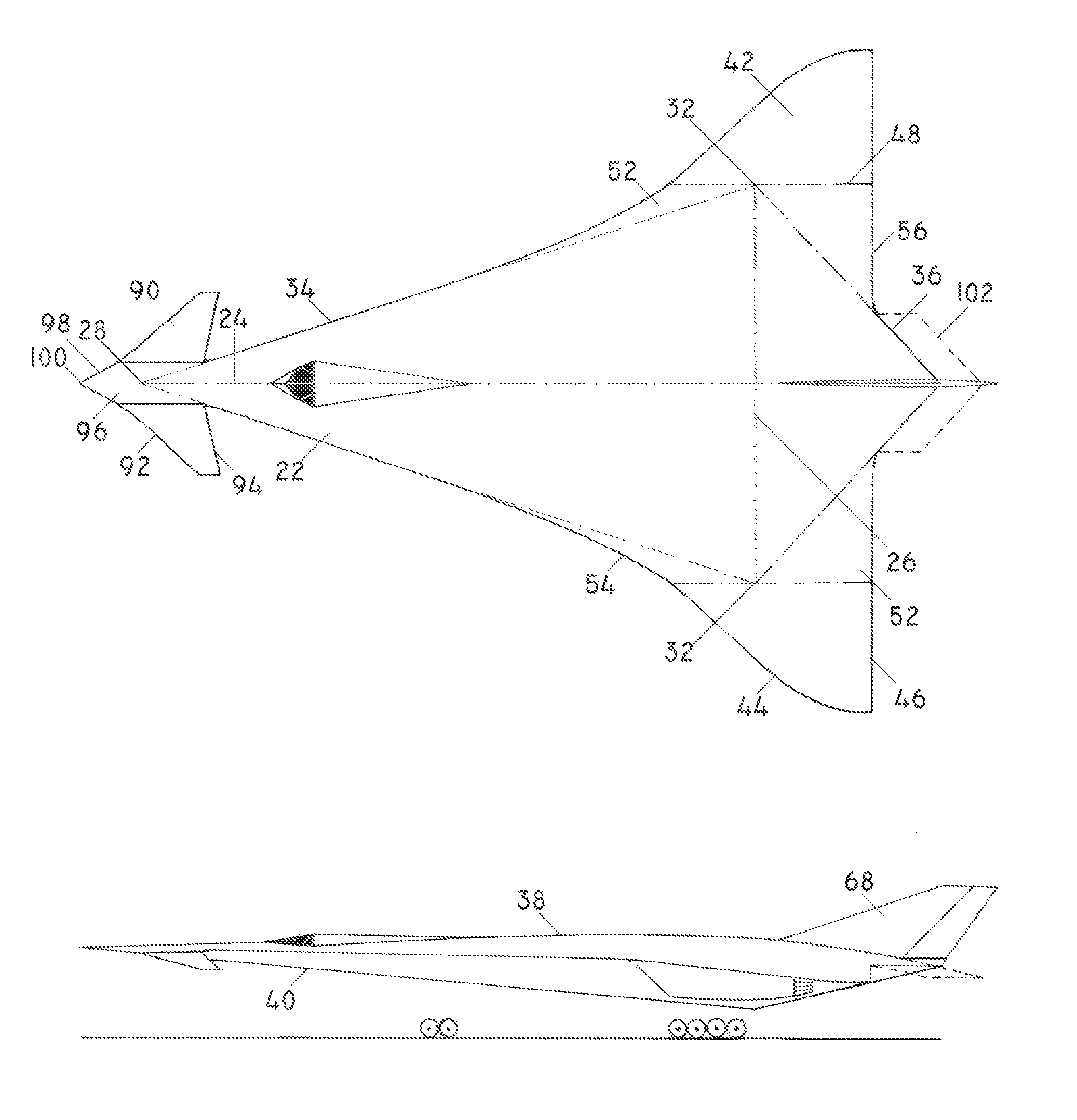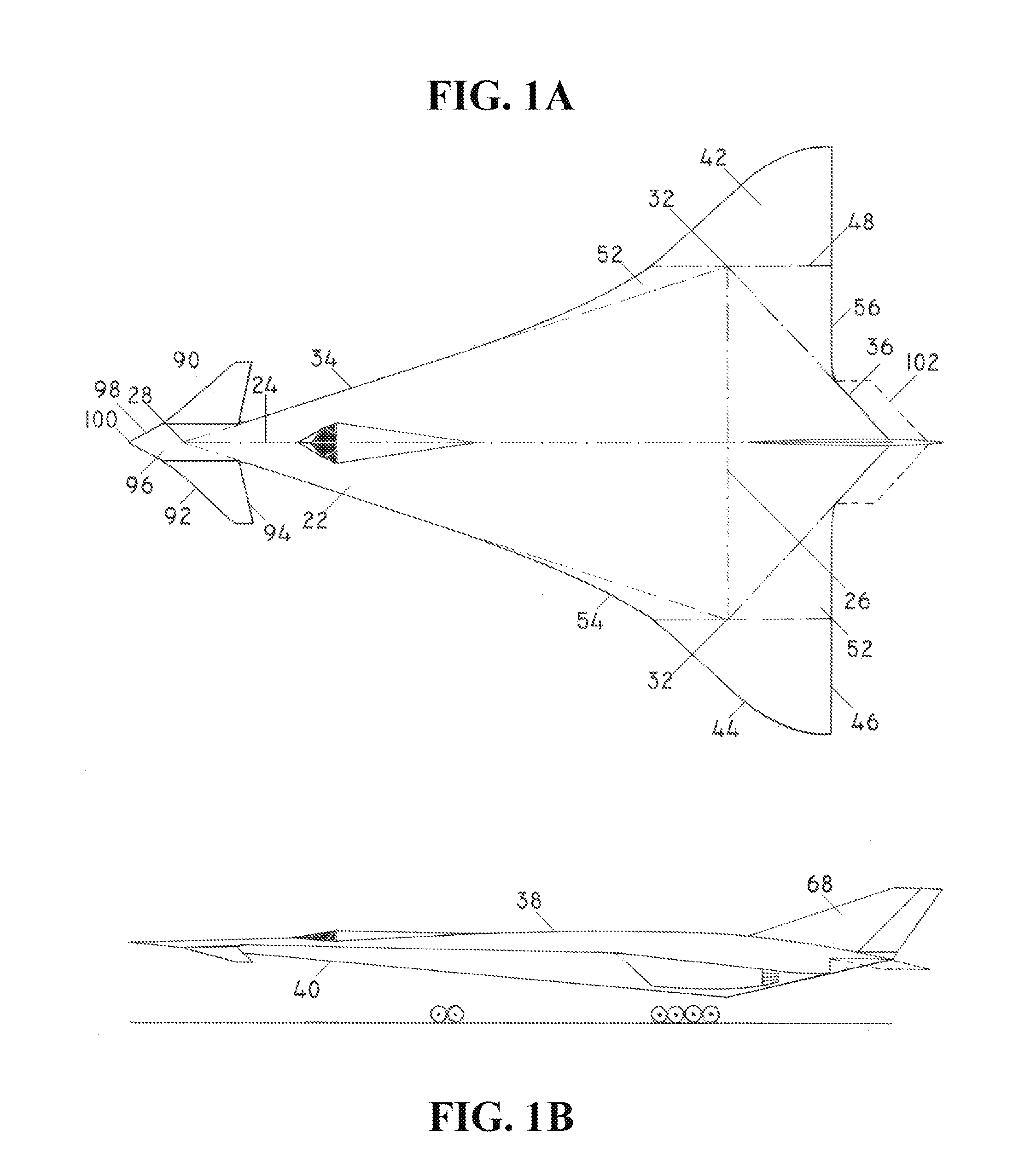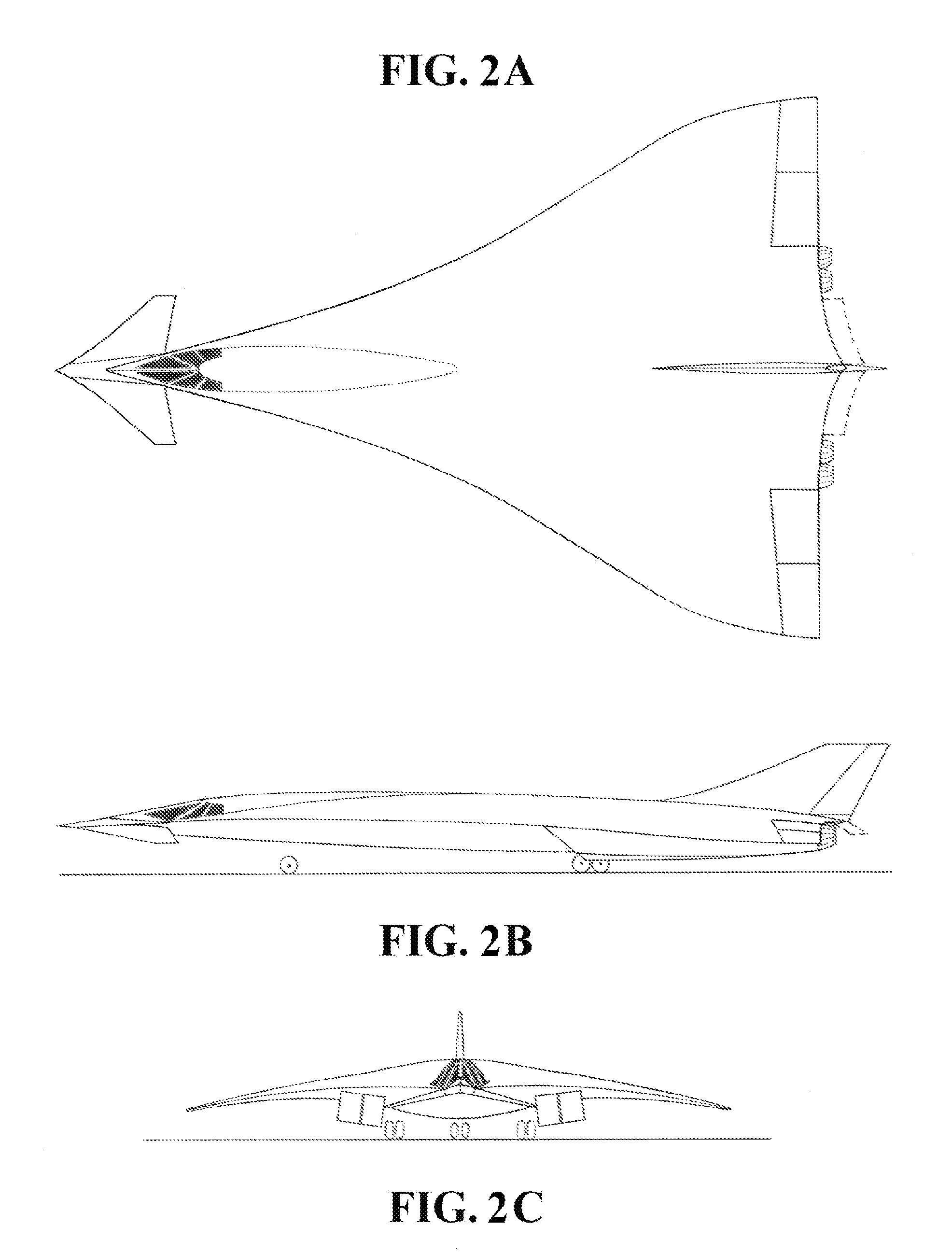Canarded deltoid main wing aircraft
a canard-type, main-wing aircraft technology, applied in the direction of canard-type aircraft, wing shapes, transportation and packaging, etc., can solve the problems of difficult to build a realistic aircraft capable of takeoff and landing on its own, jeopardizing the flight safety of aircraft, etc., to achieve a large, simple and highly aerodynamically efficient design, the effect of increasing the payload and airlifting capacity
- Summary
- Abstract
- Description
- Claims
- Application Information
AI Technical Summary
Benefits of technology
Problems solved by technology
Method used
Image
Examples
Embodiment Construction
[0045]FIGS. 1, 2, and 3 show aircraft that are based on a Canard Deltoid Main Wing (CDMW) aerodynamic configuration with all-pivotal canard sections (90). This aerodynamic configuration includes main wing (22), outer wings (42), and outer wing transition sections (52) that constitute the integral airlifting surface of aircraft, as well as canard sections (90) and canard connecting means (96). The longitudinal diagonal (24) of the main wing has a highly pronounced fore position relatively to transversal diagonal (26) in order to provide for a high efficiency of canard sections (90) in pitch control of aircraft (FIGS. 1, 2, and 3). A distinctly fore position of longitudinal diagonal (24) is providing for a high sweepback angle of main wing leading edge (34) and a distinctly aft position of lateral tips (36) where outer wings (42) are joined main wing (22), thereby CDMW aerodynamic configuration being applicable for high transonic and supersonic aircraft. Main wing (22) is distinctly l...
PUM
 Login to View More
Login to View More Abstract
Description
Claims
Application Information
 Login to View More
Login to View More - R&D
- Intellectual Property
- Life Sciences
- Materials
- Tech Scout
- Unparalleled Data Quality
- Higher Quality Content
- 60% Fewer Hallucinations
Browse by: Latest US Patents, China's latest patents, Technical Efficacy Thesaurus, Application Domain, Technology Topic, Popular Technical Reports.
© 2025 PatSnap. All rights reserved.Legal|Privacy policy|Modern Slavery Act Transparency Statement|Sitemap|About US| Contact US: help@patsnap.com



